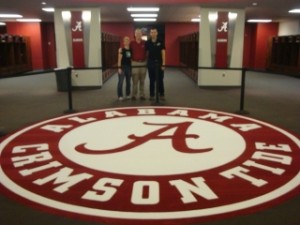Amid the ongoing economic crisis, experts see Slovenia as the next euro-zone country that might need a bail-out. A recent appearance by Prime Minister Alenka Bratušek on CNN did not inspire pundits or peasants as she repeated that “We will solve our problems ourselves”—without, however, being able to offer a tangible answer or explanation to Richard Quest’s simple question why should we believe it. In these circumstances people often turn to successful athletes as their heroes to find comfort and reassurance. This winter’s favorite was alpine skier Tina Maze who set a number of records en route to her overall World Cup title. The spotlight shifts to other athletes and events as temperatures rise and winter snow melts away in people’s memories.
Two archetypical and interconnected examples of crisis-ridden sectors in Slovenia are banking and construction. Over-simplifying, large state-owned banks are in crisis partially for not being able to collect loans offered to individual managers and corporations, many in the construction industry, over the past ten and more years. Construction was also devastated by instances of white-collar crime including bribing, tax fraud, mismanaging of corporate funding, anti-trust laws breach etc. Virtually all major Slovenian constructors went bankrupt and their former bosses are currently on trial for their alleged implication in the crimes. Some sentences have already been awarded and a number of guilty verdicts delivered. No sports here, apparently.
One of the most defining judicial proceedings has been the Clean Shovel Affair which started out as an investigation into the awarding of a public procurement to build a new control tower at the Ljubljana Airport. According to the investigators, constructors tried to secure the contract by bribing members of the tender committee. Eight indictments were filed in early 2008; the trial at the District Court of Ljubljana started in October, 2010, and in March, 2012 the court returned a guilty verdict for seven of the accused and acquitted one. The Higher Court confirmed all verdicts on 21 March 2013.
One of the seven people that were found guilty is Borut Farčnik. The prosecution established that he acted as a middle-man between the advisor who took the bribe (or “gift,” as defined by the Penal Code) and the corporations aspiring to secure the contract. Mr. Farčnik was sentenced to a jail term of ten months and given an additional €6,000 fine. The Higher Court rejected his appeal and confirmed the original sentence.
Who is Borut Farčnik—and why should sports fans care about him?
RTV Slovenija reported that Mr. Farčnik is a former head of the logistics department at the Ministry of Defense and the owner of Si Sport Ltd. According to their corporate website, Si Sport specializes in the organization of sport events.
According to the Agency for Public Legal Records and Related Services (AJPES), the ownership is actually divided between Mr. Farčnik and his children. Borut Farčnik is also the director (the top executive officer) of the company which was founded in 2000.
The company and Mr. Farčnik himself have been prominent organizers of sporting events of varying size and scope for quite some time. Between 2001 and 2008, he held top organizing roles in events such as biathlon World Championships and World Cup events, the European Youth Olympic Festival in 2003, Slovenian stages of the Giro d’Italia cycling race in 2001 and 2005, several Masters’ Games, and others. In 1999, he was even appointed by the Slovenian government to the Slovenian organizing committee for an international bid to host the 2006 Winter Olympic Games (along with Carinthia in Austria and Friuli-Venezia Giulia in Italy).
But, the company’s or even Mr. Farčnik’s stakes do not seem to have suffered from his arrest in 2008 or his indictment in 2010 or even his conviction in 2012:
Since 2006, Si Sport has organized Tek za ženske (Women’s Run), an annual running event sponsored by Drogerie Markt, a multi-national retailer.
Since 2005, it has organized Maraton Franja, a yearly cycling event sponsored among other by the City of Ljubljana (awarded a Diamond Sponsor status), Radio and Television Slovenija (the Slovenian public service broadcaster), Delo (the nation’s foremost broadsheet newspaper), Loterija Slovenije (the leading organizer of games of chance in Slovenia, listed as both a Silver and Bronze Sponsor), and I Feel Slovenia (the country’s overall brand coordinated by the Government Communication Office). Mr. Farčnik sits in the organizing committee of the event.
In 2008—after Mr. Farčnik had been arrested in connection with the bribery intermediation—Si Sport co-organized the Olympic National Hospitality House for the Slovenian NOC at the 2008 Beijing Olympics.
In 2011—with the Clean Shovel Affair trial well under way—Mr. Farčnik was Vice-President of the Organizing Committee of the World Rowing Championships. He was responsible for the financial aspect of the event. The Honorary Committee of the event included the Slovenian president, six members of the government, and even a constitutional judge, Ernest Petrič, who was the state secretary (equivalent to junior minister) presiding over the 1999 Slovenian organizing committee to host the 2006 Winter Olympics.
In December, 2012, after Mr. Farčnik had been found guilty for his involvement in the airport tower bribing scheme (the sentence is not final as he may still file an appeal with the Supreme Court), he was the Vice-President of the Executive Committee with marketing and financial responsibilities of a Biathlon World Cup event in Pokljuka, Slovenia. The committee was chaired by Aleš Hojs, then Minister of Defense.
The company, Si Sport, has been either the organizer or a partner in all the events listed.
Interestingly, Borut Farčnik is also still listed as the director of Center Pokljuka, the company that manages the Pokljuka sports center owned by the Slovenian Ski Federation.
Of course, Borut Farčnik has only been found guilty in one criminal proceeding; this text does not imply that he might be involved in others. What this author finds troubling is the fact that sports organizers, sponsors, and even top government officials are willing to work with a person accused and later convicted of taking part in a bribing scheme and even entrust him to run the financial aspects of major sports events. This hardly conveys an impression of transparency and honesty.
Even more troubling is the fact that to the best of this author’s knowledge, not a single sports journalist in Slovenia explored the ramifications of having a person convicted of white-collar crime with the financial matters of recreational and competitive sports events.
A sports official this author spoke to expressed regret at having to work with Si Sport but mitigated the claim by adding that “programs are one thing, people are another.” This explanation might echo the thoughts and stances of other organizers and journalists covering the field. The press thus either failed to connect the dots or chose not publish the details of Mr. Farčnik’s activities because they did not think they might be connected. Sport programs are indeed one thing and people are another; but in the end, people are those who organize the programs. Are we in good hands?



Ice Cream Plagiarism?
During my trip to Alabama earlier this year I visited among other an unusual but culturally significant point of interest: a supermarket. Specifically, I joined the host of my stay in Alabama, Andy Billings, on a trip to a Publix store.
Always the inquisitive type, I armed myself with a camera, eager to discover and document where the Homo Americanus fetches its food. Almost immediately upon entering the store, a stern-looking store manager approached and asked why I carried a camera. Andy, the “tour guide,” explained that we were tourists from Slovenia willing to see a real-life American supermarket. The manager, reassured, explained they are wary of business competitors trying to sneak a peek of their operations; tourists, however, were welcome to enjoy the experience and even take pictures.
While touring the frozen products aisles I came across the Publix Premium ice cream:
Cartons of Publix Premium ice cream. click to enlarge. Photo: Simon Ličen
The carton design, especially when combined with the name of the brand, looked surprisingly familiar! This is the carton design of Maxim Premium Ice Cream produced by Ljubljanske mlekarne, a Slovenian corporation that processes milk and produces dairy products:
A carton of Maxim Premium ice cream. Click to enlarge. Photo: Ljubljanske mlekarne corporate website
While the designs are obviously not exactly the same, they do bear a striking resemblance in the picture presentation of the ice cream, the “Premium” brand and even the script typeface used to spell out “Premium” and “Maxim,” respectively.
Intrigued, I emailed both corporations and asked when had the carton designs been adopted and how long had the corporation been using them.
Publix Customer Care was the first to reply as I received their response on the next business day. Their reply, however, was not particularly enlightening: “As a privately held company, we are limited in what we share. Your question on the graphic design of our Publix brand ice cream packaging falls in the realm of propriety information,” read the message.
It took Ljubljanske mlekarne almost three weeks to reply; but when they finally did, their director of corporate communication was considerably more eloquent about the features of Maxim Premium. She explained that the Maxim Premium brand was launched in 1995 while the current design of the packaging was introduced in 2003. She added that Futura, a Slovenian advertising agency, helped with the revamp.
Publix’s evasive reply and the fact that Ljubljanske mlekarne has been adopting the same packaging design for the past nine years seem to be clues in favor of Maxim Premium’s seniority. Mere clues, however, are not enough to be able to demonstrate who—if anyone at all—copied the packaging design; I leave it to the readers to decide. While summer lasts on the northern hemisphere, it might be a good idea to enjoy both—or either one is within reach.